Garden edging transforms outdoor spaces by creating clean boundaries between lawn areas, flower beds, and pathways. These design elements provide both functional and aesthetic benefits, preventing soil erosion while defining garden zones with distinctive style. Whether seeking budget-friendly solutions or premium materials, edging options range from natural stones to modern metals. Each approach offers unique visual appeal and practical advantages for maintaining organized landscapes. The right edging choice depends on garden style, maintenance preferences, and budget considerations, ensuring every outdoor space achieves its full potential.
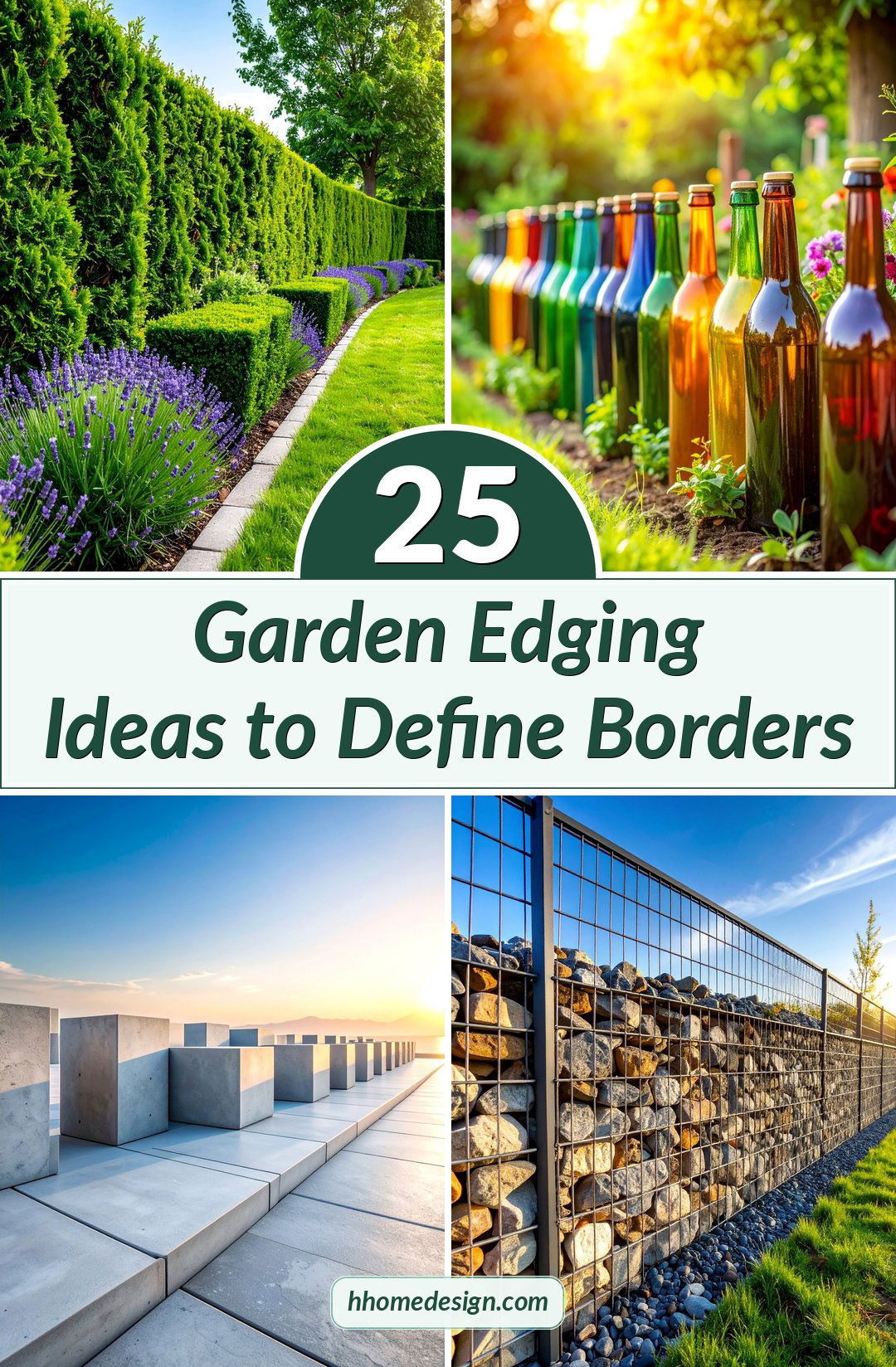
1. Classic Brick Garden Edging
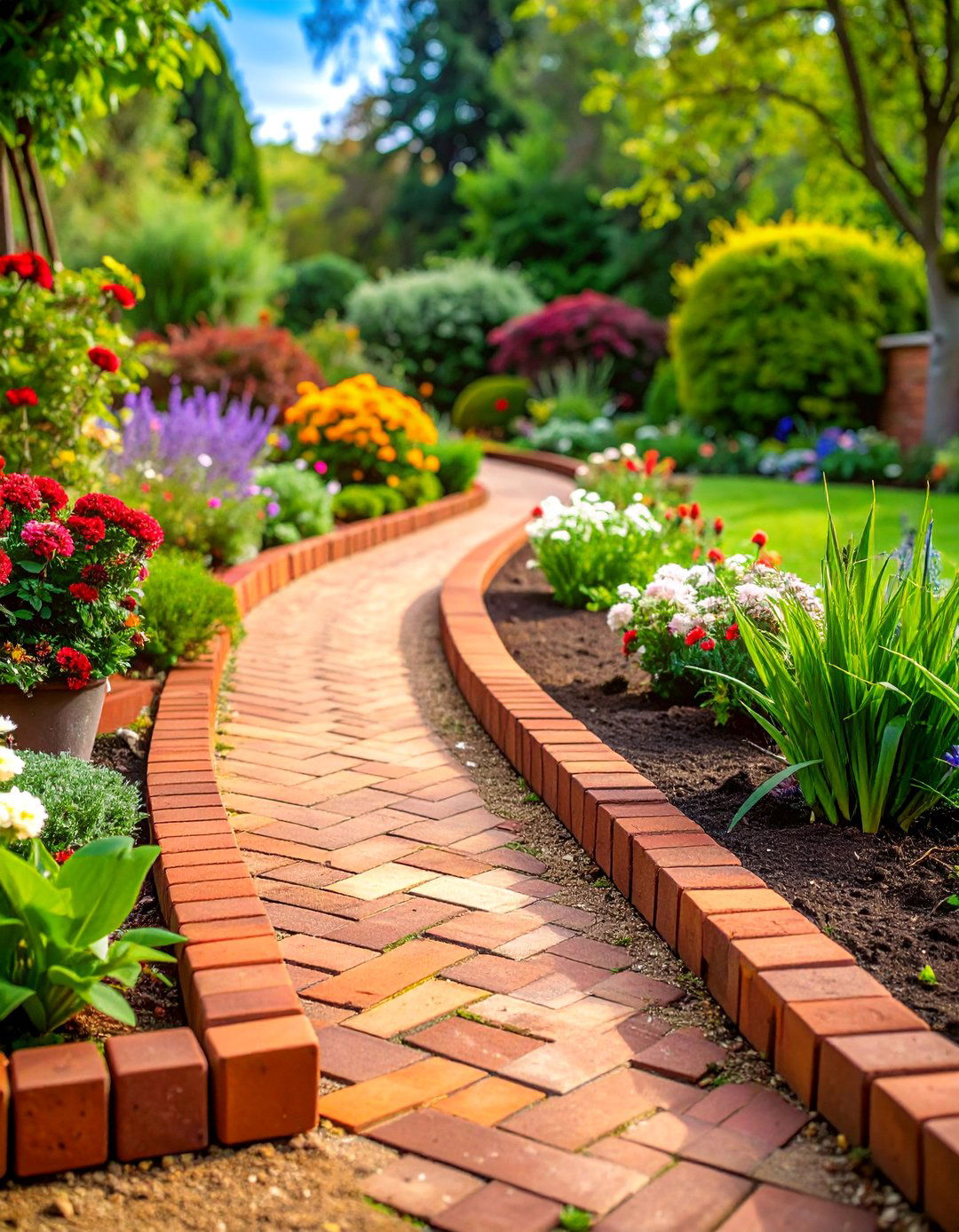
Traditional brick edging creates timeless appeal with its warm, earthy tones and versatile installation options. This enduring material works beautifully in cottage gardens, formal landscapes, and contemporary settings alike. Bricks can be laid horizontally for subtle definition or placed at angles to create decorative patterns like herringbone designs. The natural clay composition weathers gracefully over time, developing character that enhances garden maturity. Installation involves digging a shallow trench, placing bricks on a sand base, and securing with soil backfill. This edging style pairs excellently with both traditional and modern plantings, offering excellent value through durability and low maintenance requirements.
2. Natural Stone Border Design
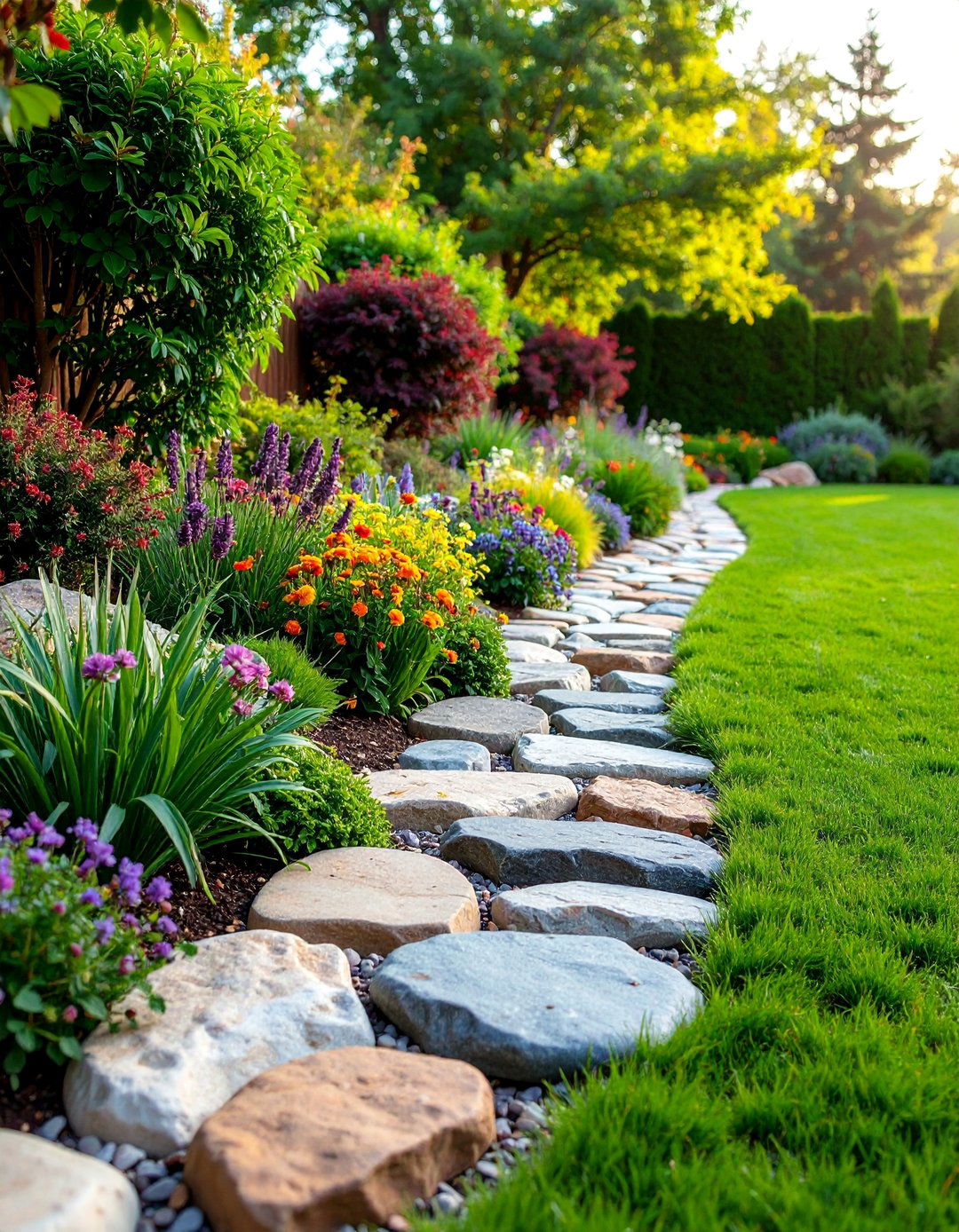
Natural stone edging brings organic beauty and permanence to garden boundaries with materials like granite, limestone, and sandstone. Each stone offers unique textures, colors, and patterns that complement surrounding vegetation naturally. Installation flexibility allows for straight lines or curved borders, adapting to any garden layout seamlessly. River rocks create informal cottage garden aesthetics, while cut stone pieces provide formal geometric definition. The material's durability withstands weather extremes and requires minimal maintenance beyond occasional repositioning. Natural stone works exceptionally well with native plantings, Mediterranean gardens, and xeriscaping designs. This investment-grade edging increases property value while creating stunning visual transitions between lawn and planted areas.
3. Modern Metal Strip Edging
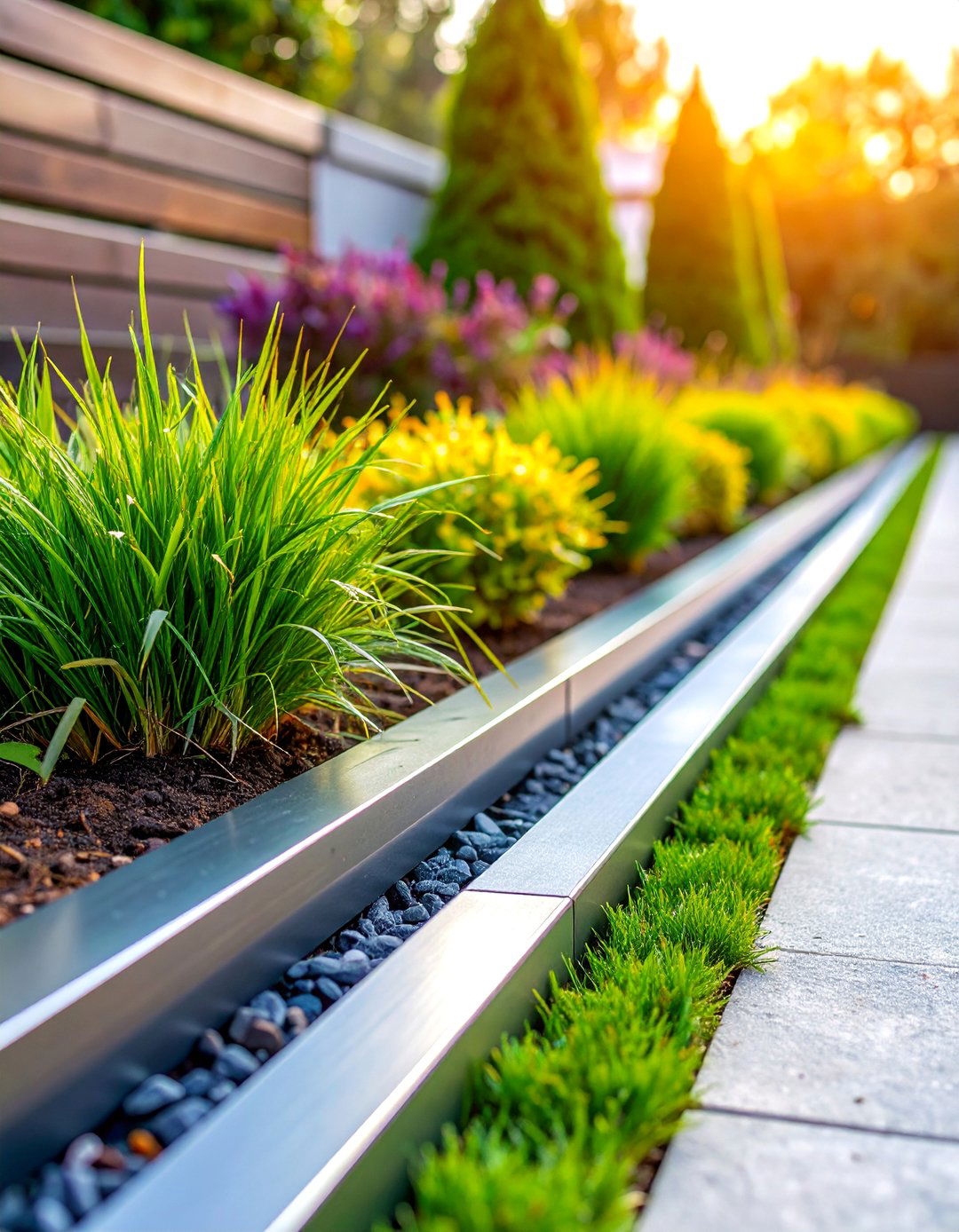
Sleek metal edging delivers contemporary sophistication with clean lines and minimalist appeal perfect for modern landscape designs. Materials include aluminum, steel, and weathering steel that develops attractive rust patina over time. The thin profile creates subtle definition while allowing easy mowing access and maintenance. Installation involves anchoring strips into trenches with stakes, creating smooth curves or sharp angles as desired. Metal edging works particularly well with ornamental grasses, architectural plantings, and geometric garden layouts. This durable solution resists weather damage and pest intrusion while maintaining crisp boundaries for years. The material's flexibility accommodates seasonal soil movement without cracking or shifting, ensuring long-term performance and visual appeal.
4. Recycled Bottle Border Creation

Upcycled glass bottles create whimsical, colorful garden borders that showcase environmental consciousness while adding unique character to landscape designs. Wine bottles, beer bottles, and decorative glass containers work beautifully when installed neck-down in soil trenches. Mixed colors create vibrant rainbow effects, while single-color schemes offer coordinated sophistication. This budget-friendly approach diverts waste from landfills while creating conversation-starting garden features. Installation requires digging trenches slightly deeper than bottle necks, positioning bottles tightly together, and backfilling with soil for stability. The translucent materials catch sunlight beautifully, creating sparkling effects throughout the day. This creative solution works wonderfully in cottage gardens, eclectic landscapes, and children's garden areas.
5. Living Hedge Boundary System

Living hedges create natural, breathing borders that change seasonally while providing habitat for beneficial wildlife and pollinators. Low-growing plants like boxwood, lavender, or ornamental grasses form defined edges that soften landscape transitions naturally. This approach integrates seamlessly with existing plantings while offering opportunities for seasonal color variation and textural interest. Plant selection depends on climate conditions, maintenance preferences, and desired mature height. Installation involves preparing soil beds, spacing plants appropriately, and establishing regular watering schedules during establishment periods. Living edges require seasonal pruning but reward gardeners with fragrant blooms, attractive foliage, and dynamic seasonal changes. This environmentally beneficial choice supports biodiversity while creating beautiful, functional garden boundaries.
6. Bamboo Roll Edging System
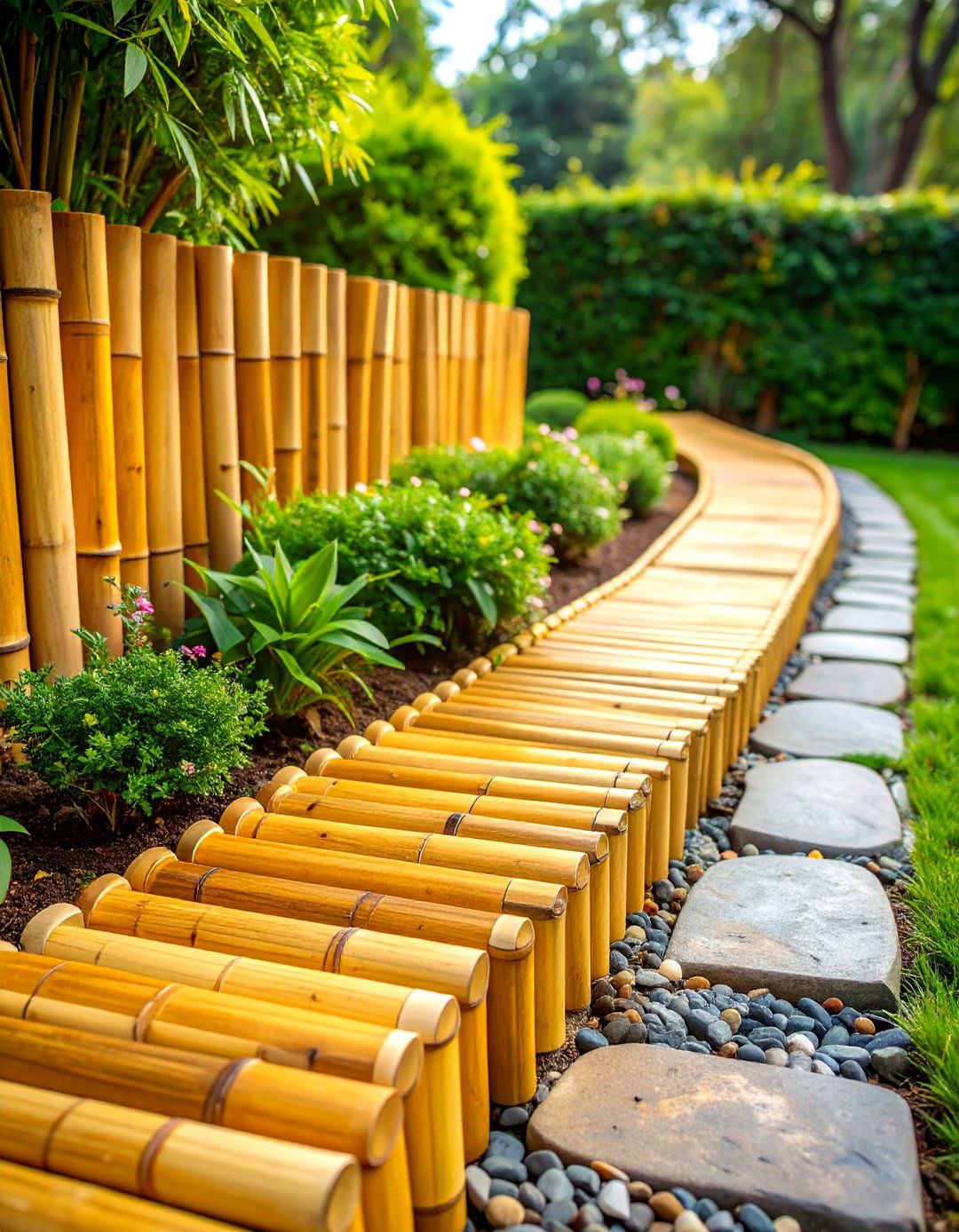
Sustainable bamboo edging brings tropical elegance and eco-friendly appeal to garden boundaries with natural materials that regenerate rapidly. Pre-constructed bamboo rolls offer easy installation around curved or straight garden edges, creating defined spaces with organic textures. The material's natural weather resistance and flexibility make it suitable for various climate conditions and soil types. Bamboo's golden tones complement Asian-inspired gardens, contemporary landscapes, and natural settings beautifully. Installation involves unrolling sections along prepared trenches, securing with included stakes, and connecting pieces for continuous borders. This lightweight solution requires minimal maintenance while providing excellent durability and visual interest. The sustainable harvesting practices behind bamboo production make this choice environmentally responsible and aesthetically pleasing.
7. Gabion Stone Wall Edging

Industrial-chic gabion walls create dramatic garden boundaries using wire mesh containers filled with decorative stones or recycled materials. These modern structures provide excellent drainage while creating substantial visual presence in contemporary landscape designs. Stone selections range from uniform river rocks to mixed aggregates, allowing customization to match existing hardscaping elements. The modular construction accommodates various heights and lengths, making gabions suitable for both subtle edging and retaining wall applications. Installation requires level foundations and proper wire mesh assembly, but results in extremely durable, low-maintenance boundaries. This architectural approach works beautifully with modern homes, commercial landscapes, and urban garden settings. The permeable construction prevents water buildup while creating striking textural contrasts.
8. Weathering Steel Edging Design

Corten steel edging develops beautiful rust patina over time, creating sophisticated industrial aesthetics that complement contemporary architectural styles perfectly. This self-weathering material eliminates painting requirements while developing protective oxidation layers that prevent further corrosion. The thin profile creates clean, precise lines that enhance modern plantings and geometric garden layouts. Installation involves professional cutting and anchoring for optimal performance and safety. The material's strength allows for curved installations and integration with existing hardscaping elements seamlessly. Weathering steel works exceptionally well with ornamental grasses, succulents, and architectural plants that echo its modern appeal. This premium edging choice delivers decades of maintenance-free performance while developing increasingly attractive patina characteristics.
9. Terracotta Tile Border Style

Mediterranean-inspired terracotta tiles bring warm, earthy elegance to garden borders with traditional clay materials that evoke European countryside charm. These decorative elements create sophisticated transitions between lawn and planted areas while adding rich color depth to landscape palettes. Tile selections include various sizes, shapes, and glazed finishes that coordinate with existing architectural elements and outdoor living spaces. Installation requires level preparation and careful placement to ensure proper drainage and stability. The material's porosity allows beneficial air and water movement while creating attractive textural interest. Terracotta edging works beautifully with herb gardens, Mediterranean plantings, and courtyard designs. This classic choice develops attractive aging characteristics while maintaining structural integrity through seasonal temperature variations.
10. Seashell Coastal Edging
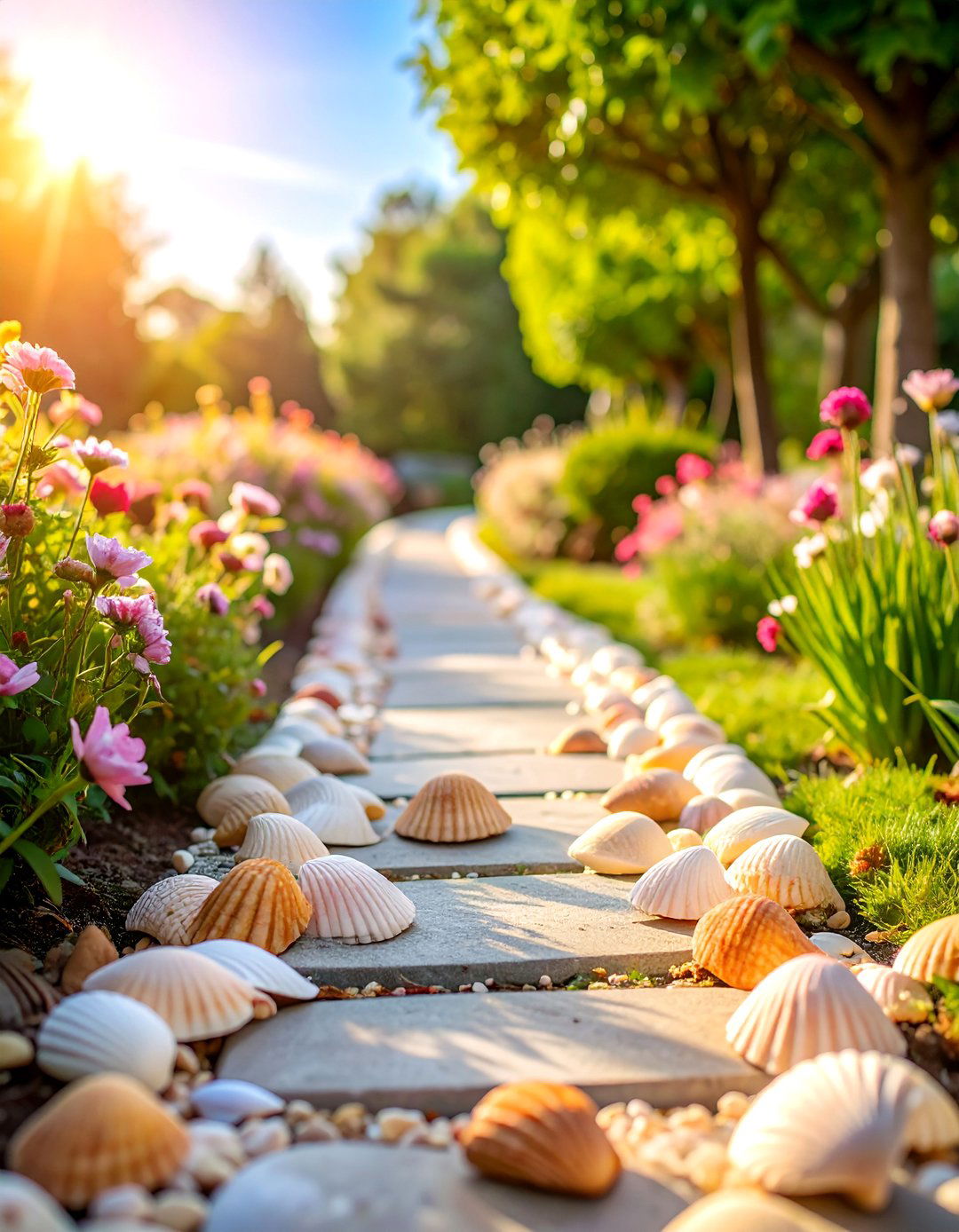
Coastal-inspired seashell borders bring beachside charm to inland gardens while creating unique textural interest with natural marine materials. Large clam shells, conch shells, and decorative varieties create memorable boundaries that celebrate seaside aesthetics year-round. This creative approach works particularly well with sandy soils, coastal plantings, and relaxed cottage garden styles. Shell selections can emphasize natural colorations or include painted varieties for enhanced visual impact. Installation involves creating shallow trenches and positioning shells for optimal stability and visual appeal. The calcium carbonate composition gradually enriches soil as shells break down naturally over time. This distinctive edging choice creates conversation-starting garden features while connecting landscapes to coastal environments through natural materials and oceanic themes.
11. Railway Sleeper Raised Borders

Reclaimed railway sleepers create substantial raised garden borders with rustic industrial character that suits contemporary and traditional landscapes equally well. These substantial timber pieces provide excellent soil retention while creating comfortable seating edges for garden maintenance and relaxation. The weathered wood surfaces develop attractive silvery patina over time, adding authentic aged appeal to landscape designs. Installation requires level preparation and secure anchoring to prevent movement during freeze-thaw cycles. Multiple sleeper courses create impressive height variation for terraced gardens and sloped sites. This robust solution works beautifully with native plantings, vegetable gardens, and informal landscape styles. The substantial scale makes railway sleepers ideal for larger garden spaces where proportional impact creates dramatic visual presence.
12. Concrete Block Modular System
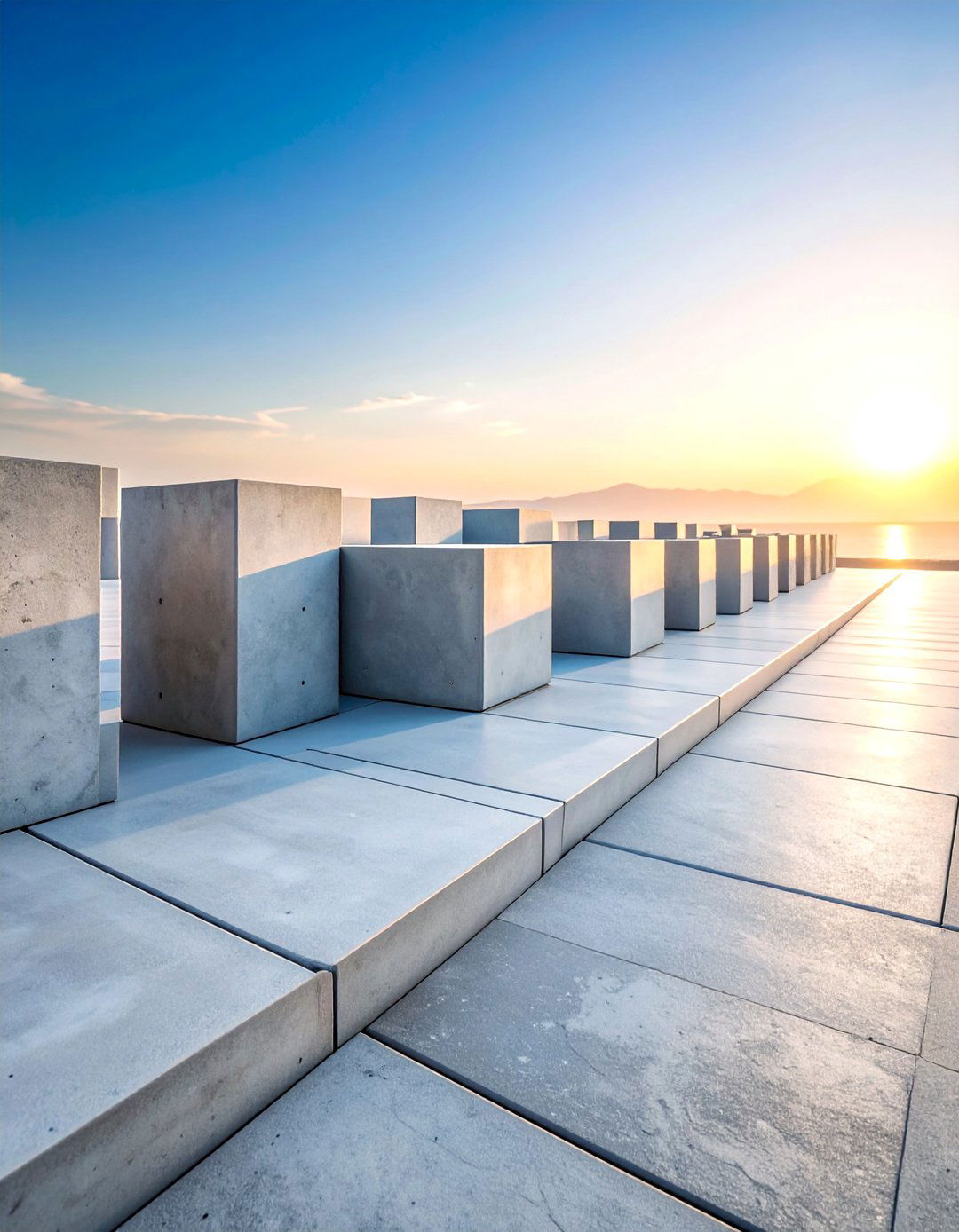
Modern concrete blocks offer versatile, affordable edging solutions with clean geometric lines that complement contemporary architecture and minimalist garden designs. These uniform modules create precise boundaries while allowing creative stacking patterns and integrated planting pockets. Various finishes include smooth, textured, and colored options that coordinate with existing hardscaping elements. Installation involves level preparation and careful alignment for professional-looking results. The material's durability withstands weather extremes while requiring minimal maintenance throughout its service life. Concrete blocks work exceptionally well with succulents, ornamental grasses, and architectural plantings that echo geometric themes. This practical choice offers excellent value through longevity and design flexibility, making it suitable for both residential and commercial applications.
13. Willow Wattle Fencing Border

Traditional woven willow creates charming cottage garden borders with handcrafted appeal that brings countryside character to suburban landscapes. These flexible panels can be shaped around curves and corners while providing natural boundaries that complement informal planting styles perfectly. The organic textures and golden-brown colorations develop attractive weathered appearances over time. Installation involves anchoring posts and weaving willow branches or purchasing pre-made panels for easier application. This renewable material supports sustainable gardening practices while creating habitat for beneficial insects and small wildlife. Willow edging works beautifully with English garden styles, herb gardens, and naturalistic landscapes. The handmade quality adds artisanal character that distinguishes gardens from mass-produced alternatives while celebrating traditional craftsmanship.
14. Recycled Tire Planter Edging
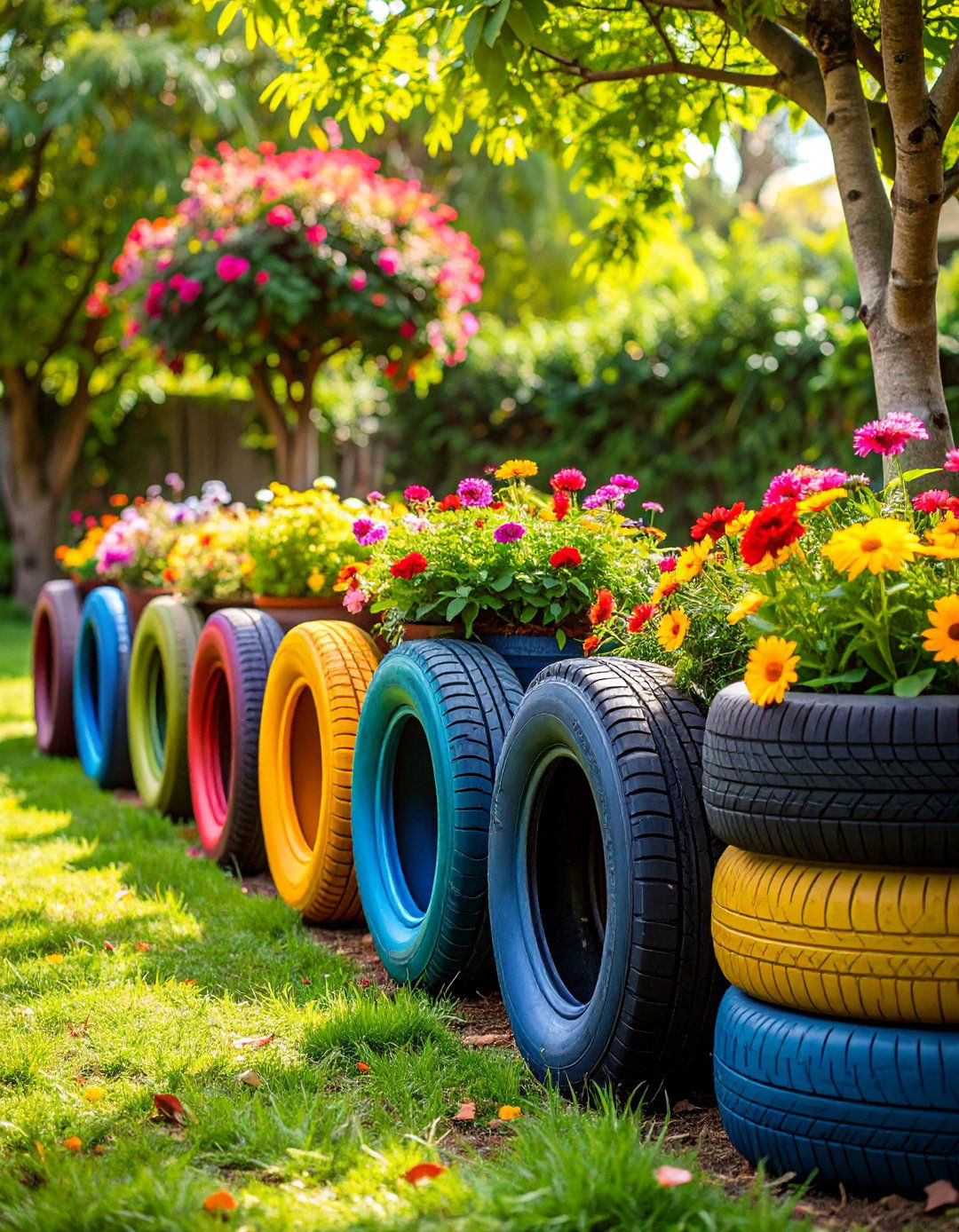
Creative tire planters transform waste materials into functional garden borders while adding playful color and sustainable practices to landscape designs. Painted tires create vibrant accents that can be customized to match seasonal themes or coordinate with existing outdoor color schemes. Cut tires offer various shapes and sizes for different planting applications and visual effects. Installation involves positioning tires along desired boundaries and filling with quality potting soil for optimal plant growth. The rubber material retains moisture effectively while providing excellent insulation for root systems during temperature extremes. This budget-friendly approach diverts waste from landfills while creating unique garden features that spark conversations. Tire planters work particularly well with annual flowers, herbs, and vegetables in informal garden settings.
15. Plastic Strip Edging System

Flexible plastic edging provides affordable, easy-to-install boundaries that adapt to curved garden layouts while maintaining clean separation between lawn and planted areas. Modern plastic formulations resist UV degradation and temperature extremes while remaining flexible for easy shaping. Various colors and profiles accommodate different aesthetic preferences and functional requirements. Installation involves digging shallow trenches and anchoring strips with included stakes for secure positioning. The material's flexibility prevents cracking during freeze-thaw cycles while maintaining consistent boundaries throughout seasons. Plastic edging works well with informal gardens, vegetable plots, and areas requiring frequent boundary adjustments. This practical solution offers excellent value for budget-conscious gardeners while providing reliable performance and easy maintenance requirements throughout its service life.
16. River Rock Natural Borders

Smooth river rocks create organic garden boundaries that bring natural beauty and excellent drainage to landscape designs while complementing various architectural styles. These water-worn stones offer pleasing rounded shapes and diverse color variations that blend harmoniously with existing landscape elements. Size options range from small pebbles to substantial boulders, allowing customization based on scale and visual impact requirements. Installation involves excavating shallow trenches and positioning rocks for stable, attractive arrangements. The natural materials weather beautifully while requiring minimal maintenance beyond occasional repositioning after heavy rains. River rock edging works exceptionally well with native plantings, water features, and informal garden styles. This versatile choice creates habitat for beneficial insects while providing permeable boundaries that support healthy soil drainage.
17. Poured Concrete Curb Edging

Professional poured concrete creates permanent, custom-shaped garden boundaries with smooth, architectural lines that complement modern landscape designs perfectly. This seamless approach eliminates joints and gaps while providing maximum durability against weather extremes and mechanical damage. Various finish options include stamped patterns, exposed aggregates, and colored concrete that coordinates with existing hardscaping elements. Installation requires professional expertise for proper grading, reinforcement, and finishing techniques. The monolithic construction prevents weed intrusion while creating crisp, defined edges that enhance property values significantly. Poured concrete works exceptionally well with formal gardens, commercial landscapes, and contemporary architectural styles. This premium solution delivers decades of maintenance-free performance while providing design flexibility that accommodates complex shapes and elevation changes.
18. Wooden Log Roll Borders
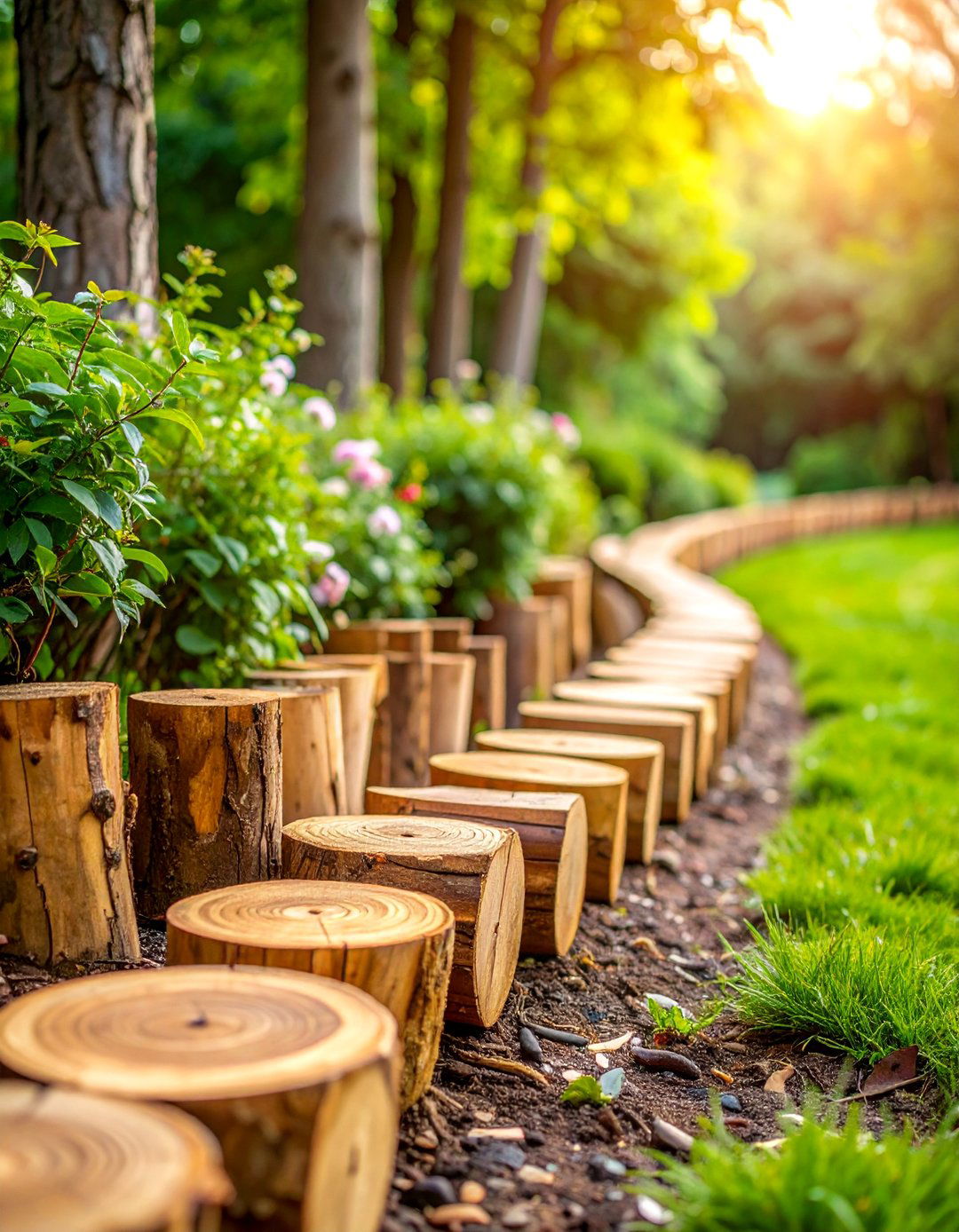
Natural log rolls create rustic garden boundaries with organic appeal that complements cottage gardens and informal landscape styles beautifully. Pre-connected wooden sections install easily around curved or straight edges while providing flexible height options for various applications. The natural wood surfaces develop attractive weathered patina over time, adding authentic aged character to garden designs. Installation involves unrolling sections along prepared trenches and securing with included stakes for stable positioning. Various wood species offer different colorations and grain patterns that coordinate with existing landscape elements. Log roll edging works wonderfully with native plantings, woodland gardens, and natural landscaping approaches. This affordable solution provides good durability while maintaining organic aesthetics that enhance rather than dominate surrounding plantings.
19. Decorative Paving Stone Edging

Elegant paving stones create sophisticated garden boundaries with geometric precision that enhances formal landscape designs and architectural gardens. Various materials include natural stone, concrete pavers, and clay bricks that offer diverse colors, textures, and patterns. The uniform shapes allow creative arrangements including running bonds, herringbone patterns, and basket weave designs. Installation requires careful leveling and sand base preparation for professional-looking results and long-term stability. The solid construction prevents soil migration while creating defined pathways and seating areas within garden spaces. Decorative paving works exceptionally well with formal herb gardens, rose gardens, and symmetrical landscape layouts. This versatile choice increases property values while providing durable, attractive boundaries that complement various architectural styles.
20. Succulent Living Edge Design

Drought-tolerant succulents create stunning living borders that provide year-round color and texture while requiring minimal water and maintenance inputs. Plant varieties like hens and chicks, sedums, and agaves offer diverse forms, colors, and growth habits for customized designs. The architectural qualities of succulents complement modern landscape styles while providing sustainable gardening solutions. Installation involves preparing well-draining soil beds and spacing plants according to mature sizes and growth patterns. These water-wise plants thrive in challenging conditions while creating unique textural interest that changes seasonally. Succulent edging works beautifully with xeriscaping, contemporary gardens, and low-maintenance landscape designs. This environmentally conscious choice reduces water consumption while providing attractive, functional boundaries that support beneficial pollinators and wildlife.
21. Metal Pipe Planter Borders

Industrial metal pipes create modern garden boundaries with dual functionality as both edging and unique planters for cascading plants or herbs. Various pipe diameters and lengths accommodate different design scales and planting requirements while maintaining consistent geometric aesthetics. The weathering steel or painted finishes coordinate with contemporary architectural elements and modern landscape themes. Installation involves securing pipes vertically or horizontally along desired boundaries with proper drainage considerations. These cylindrical planters work exceptionally well with trailing succulents, ornamental grasses, and architectural plants that echo industrial themes. Metal pipe edging suits urban gardens, commercial landscapes, and contemporary residential designs perfectly. This innovative approach maximizes planting space while creating striking visual elements that distinguish properties through creative boundary solutions.
22. Flagstone Natural Edge System

Premium flagstone creates elegant garden boundaries with natural beauty and exceptional durability that enhances property values significantly over time. Various stone types offer different colors, textures, and patterns that coordinate with existing architectural elements and landscape features. The irregular shapes create organic boundaries that complement both formal and informal garden styles beautifully. Installation requires careful selection and fitting of individual stones for stable, attractive arrangements. The natural materials develop attractive aging characteristics while maintaining structural integrity through weather extremes. Flagstone edging works wonderfully with perennial gardens, water features, and sophisticated landscape designs. This investment-grade choice provides decades of maintenance-free performance while creating timeless beauty that appreciates alongside mature plantings and architectural improvements.
23. Composite Material Borders
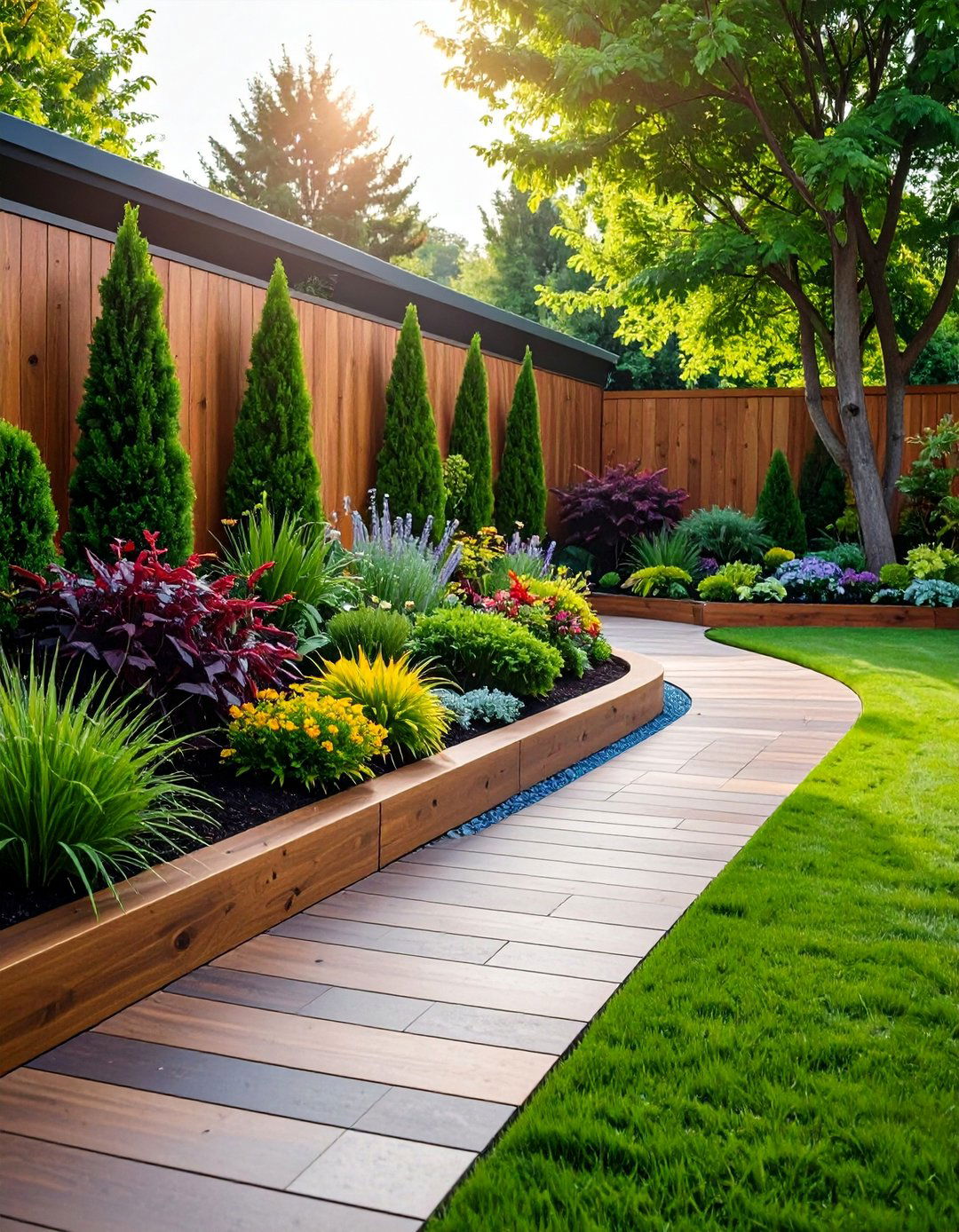
Modern composite edging combines recycled plastic and wood fibers to create durable, eco-friendly boundaries that resist rot, insects, and weather damage. Various colors and textures mimic natural wood appearances while eliminating maintenance requirements like staining or sealing. The lightweight materials install easily while providing excellent flexibility for curved applications and complex shapes. Installation involves standard trenching and anchoring techniques with minimal tool requirements. Composite materials support sustainable building practices while delivering superior performance compared to traditional wood alternatives. This edging works well with contemporary gardens, commercial landscapes, and environmentally conscious designs. The consistent quality and appearance eliminate natural wood variations while providing predictable performance and longevity that justifies the initial investment through reduced maintenance costs.
24. Cinder Block Functional Edging
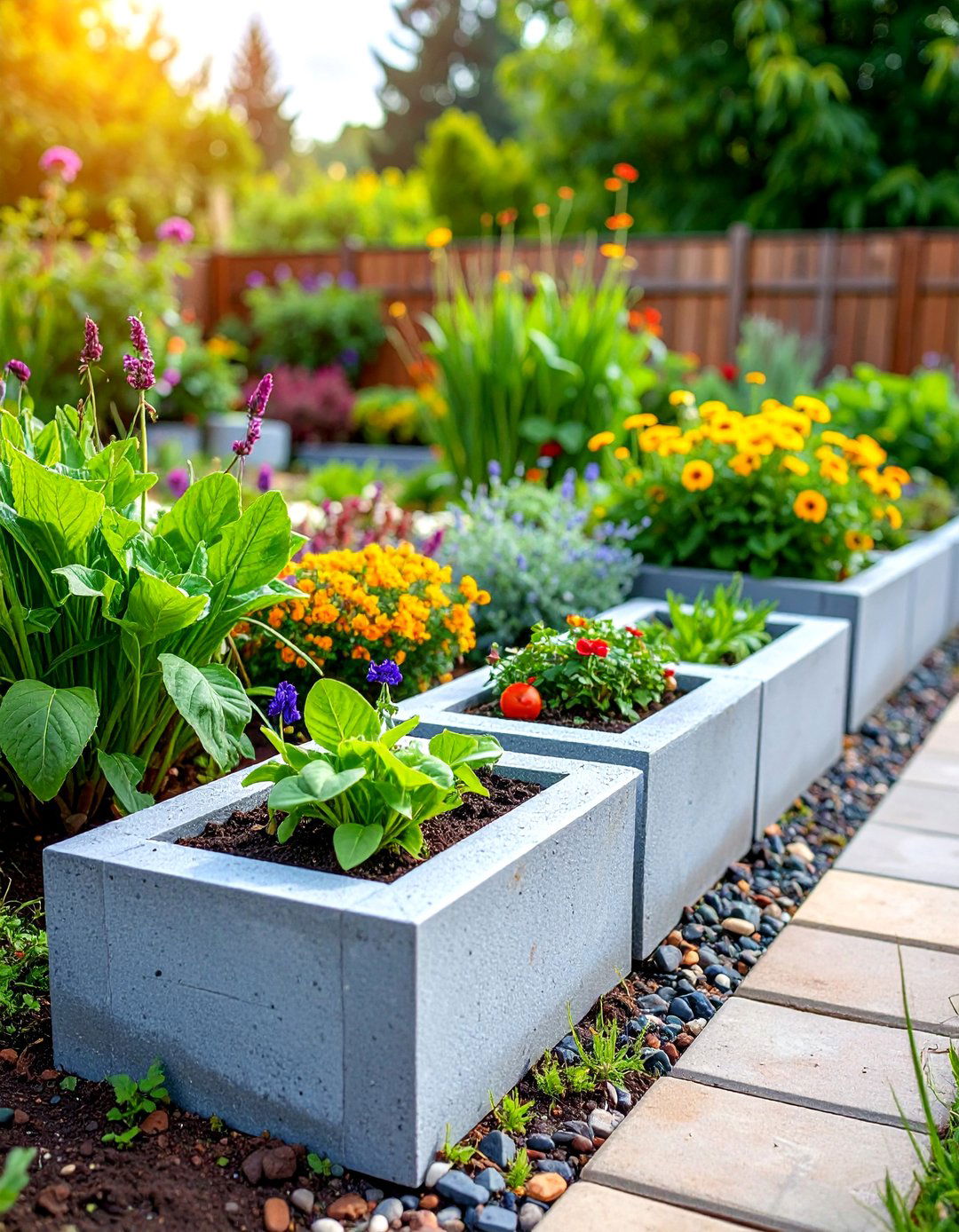
Versatile cinder blocks create substantial garden boundaries while providing integrated planting spaces within their hollow cores for expanded gardening opportunities. These affordable concrete blocks can be stacked for height variation or laid single-course for subtle definition along garden edges. The geometric forms complement modern landscape designs while providing practical benefits like soil retention and seating surfaces. Installation requires level preparation and careful alignment for professional appearance and structural stability. The hollow cores accommodate small plants, herbs, or decorative elements that enhance visual interest and functionality. Cinder block edging works exceptionally well with vegetable gardens, urban landscapes, and contemporary designs. This practical solution maximizes space utilization while creating distinctive boundaries that serve multiple functions.
25. Gravel Strip Border Design
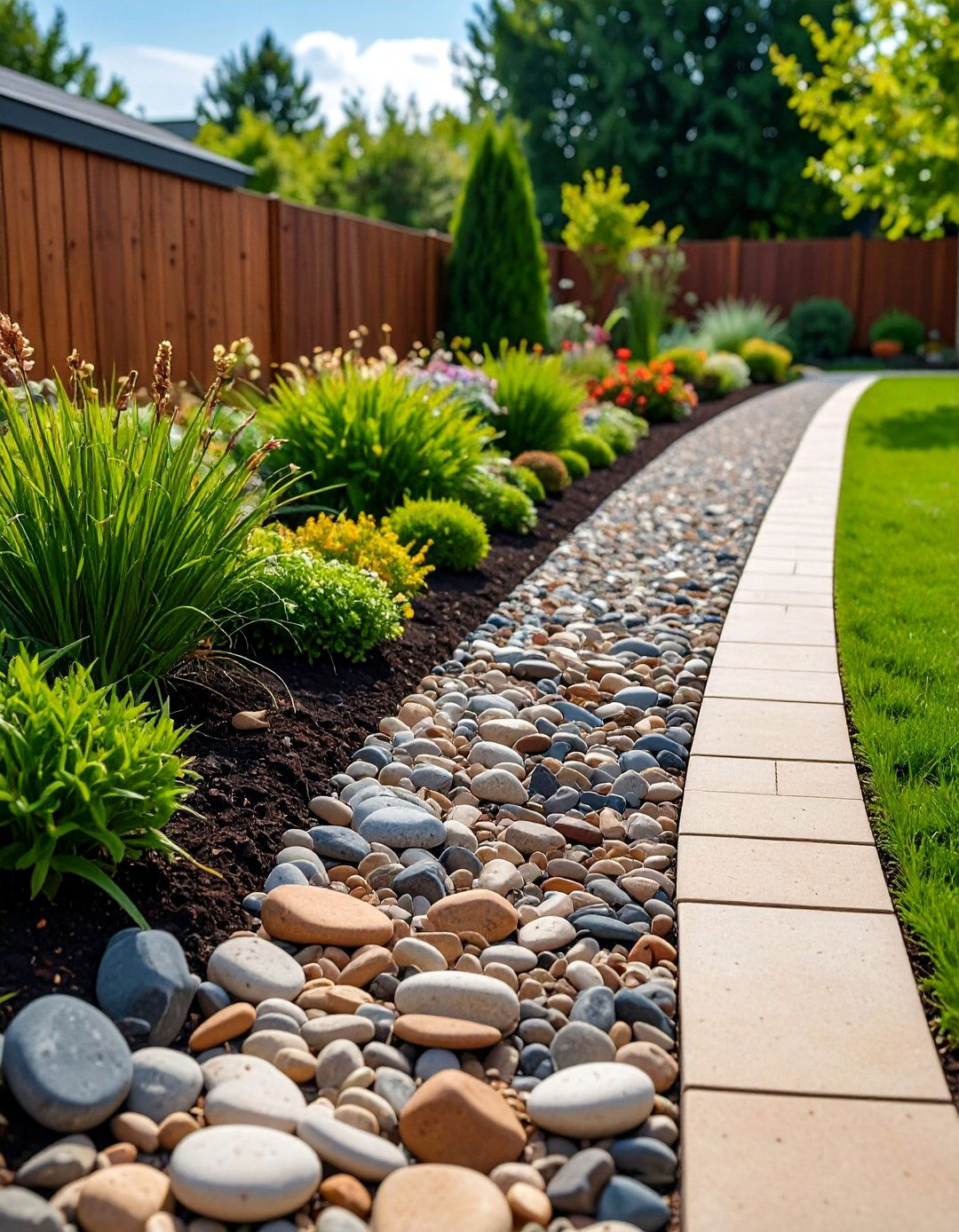
Decorative gravel creates permeable garden boundaries that provide excellent drainage while adding textural interest and color variation to landscape designs. Various aggregate types include river pebbles, crushed granite, and colored gravels that coordinate with existing hardscaping elements. The loose materials adapt to seasonal soil movement while maintaining defined boundaries between different garden zones. Installation involves excavating trenches, installing edge restraints, and filling with selected aggregates for stable, attractive results. Gravel boundaries work exceptionally well with drought-tolerant plants, modern landscapes, and areas requiring superior drainage characteristics. This low-maintenance solution prevents mud tracking while creating crisp transitions between lawn and planted areas. The material choices offer extensive customization opportunities that complement various architectural styles.
Conclusion:
Garden edging transforms outdoor spaces by creating defined boundaries that enhance both functionality and aesthetic appeal. From traditional materials like brick and stone to innovative solutions using recycled components, each approach offers unique benefits for different garden styles and budgets. The key to successful edging lies in selecting materials that complement existing landscape elements while meeting practical requirements for drainage, maintenance, and durability. These diverse options ensure every gardener can find the perfect boundary solution to showcase their plantings and create cohesive outdoor environments.


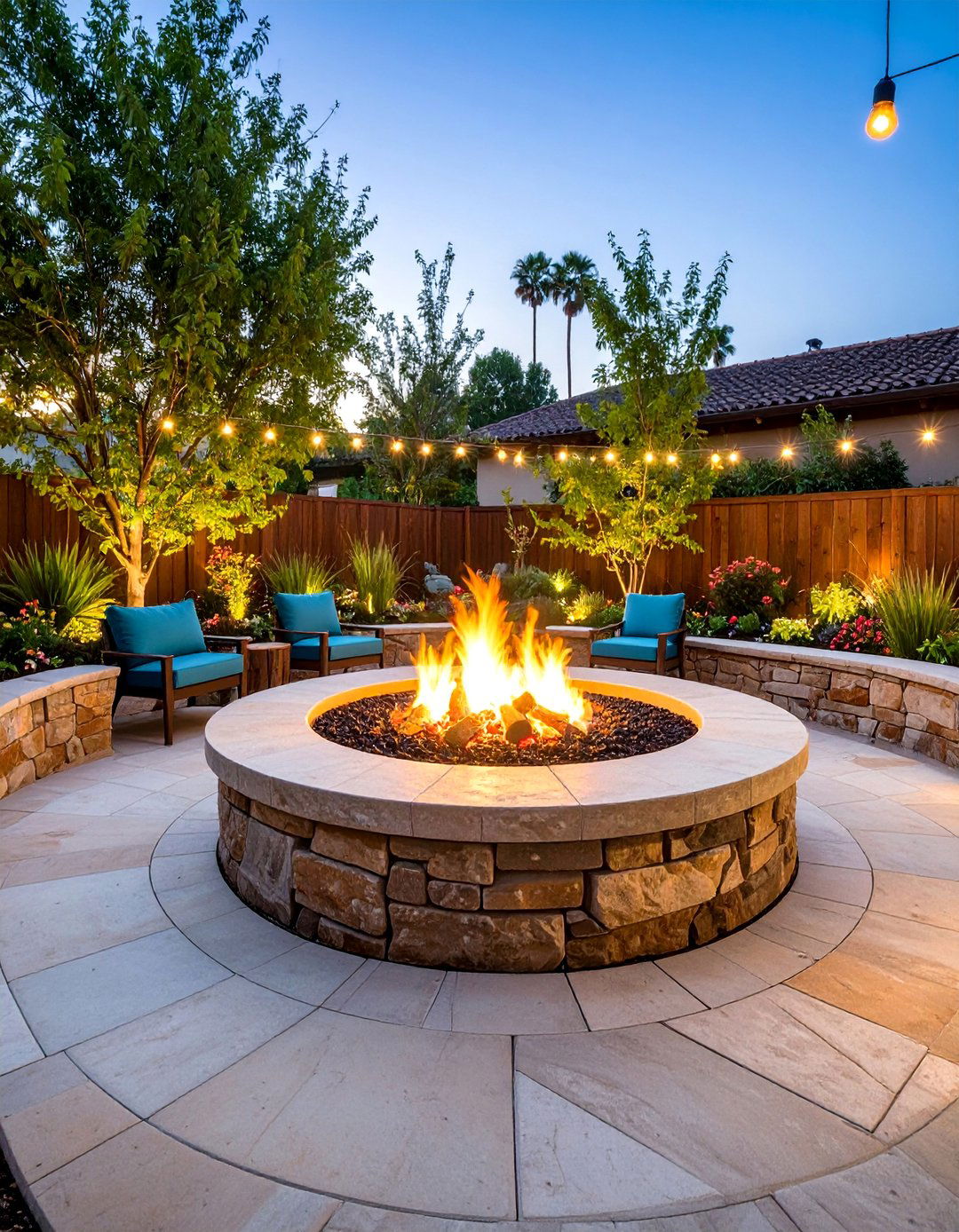

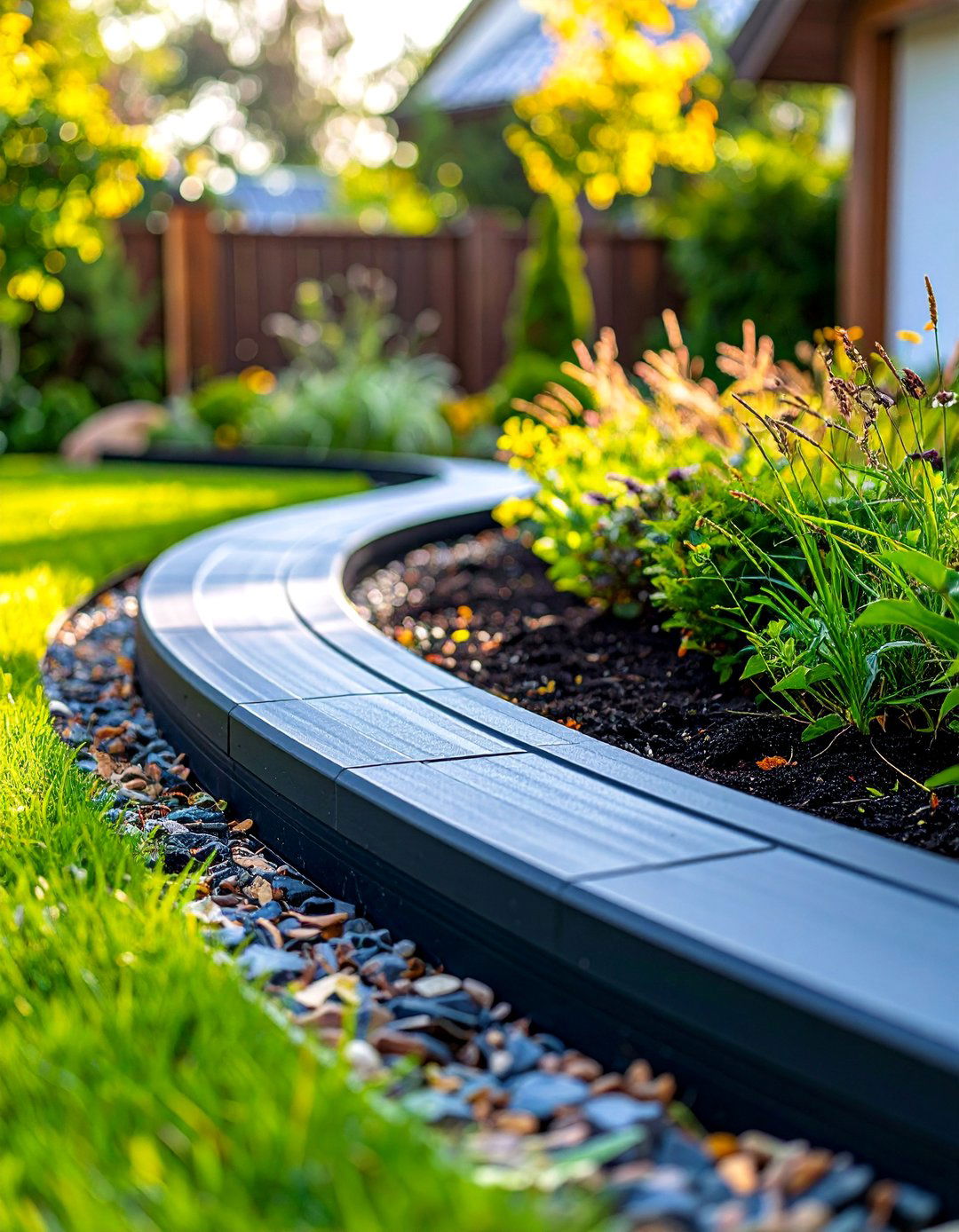
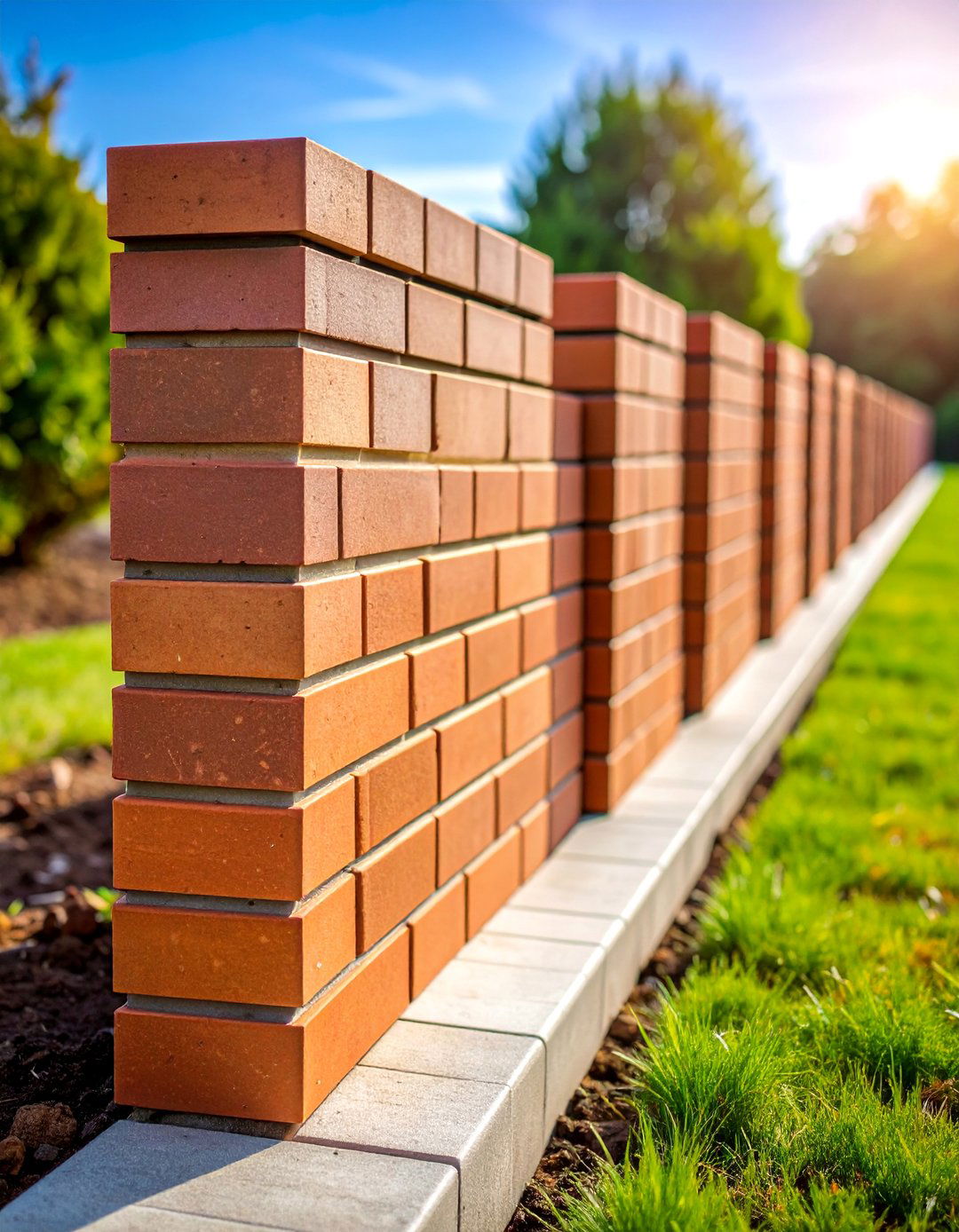
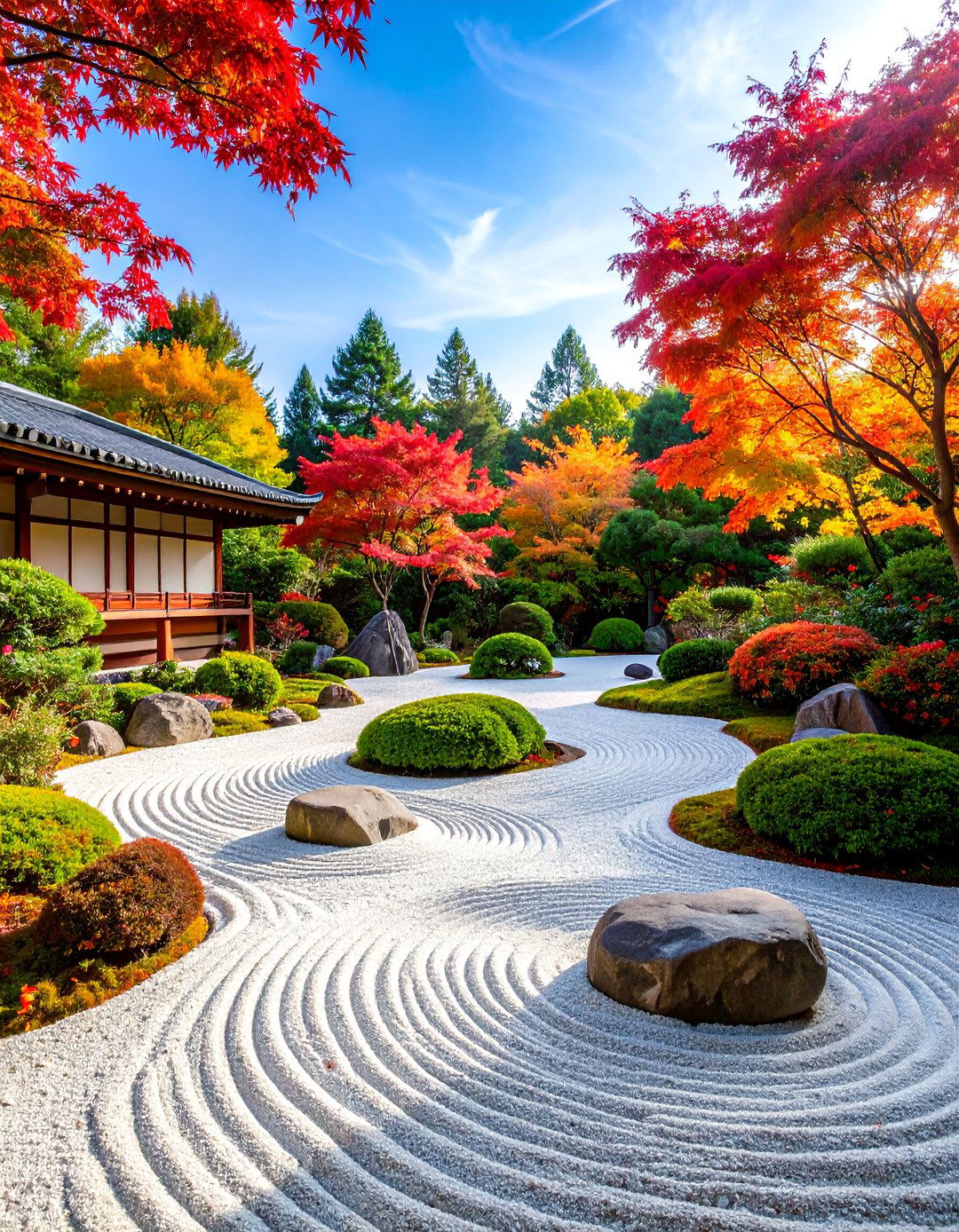
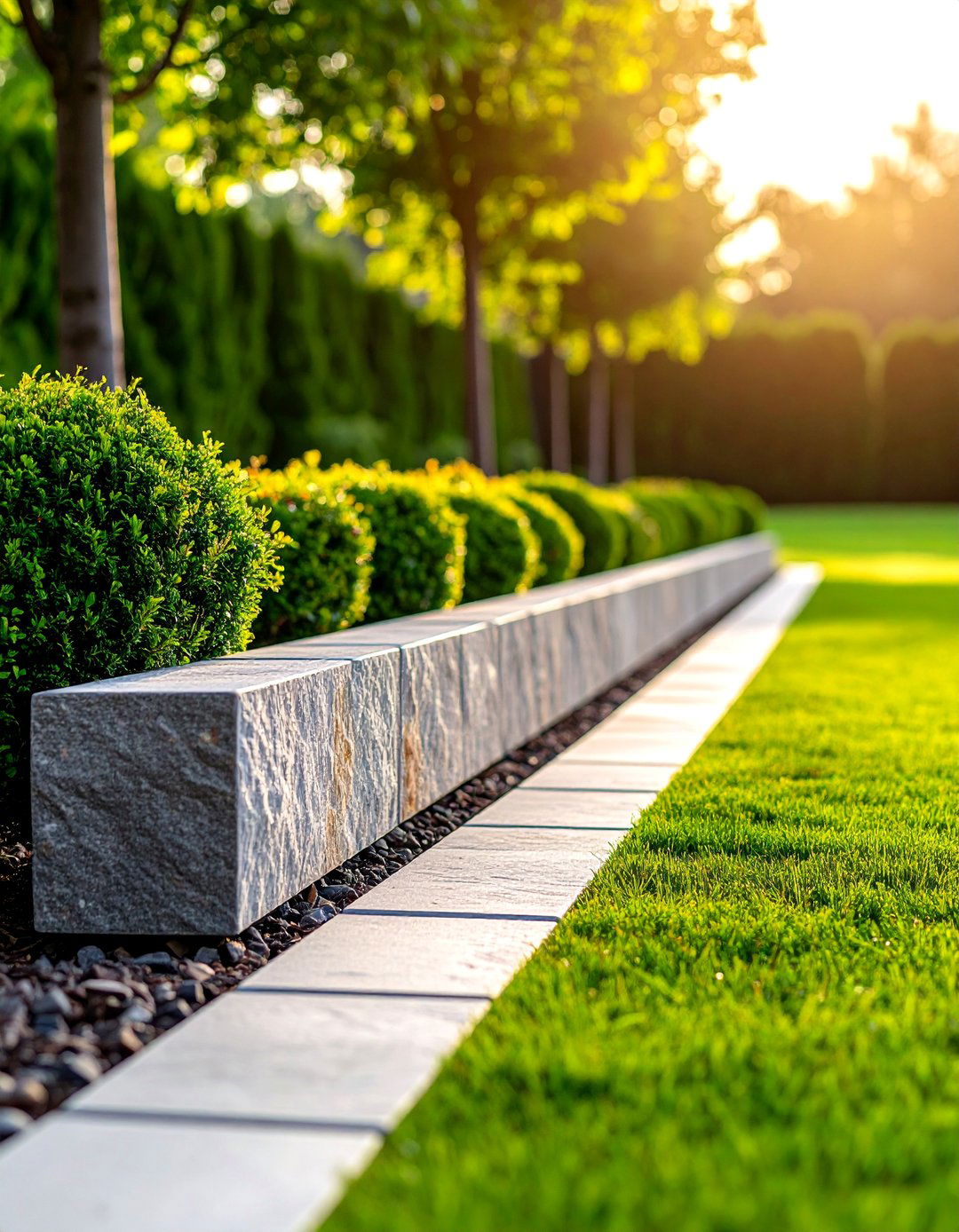
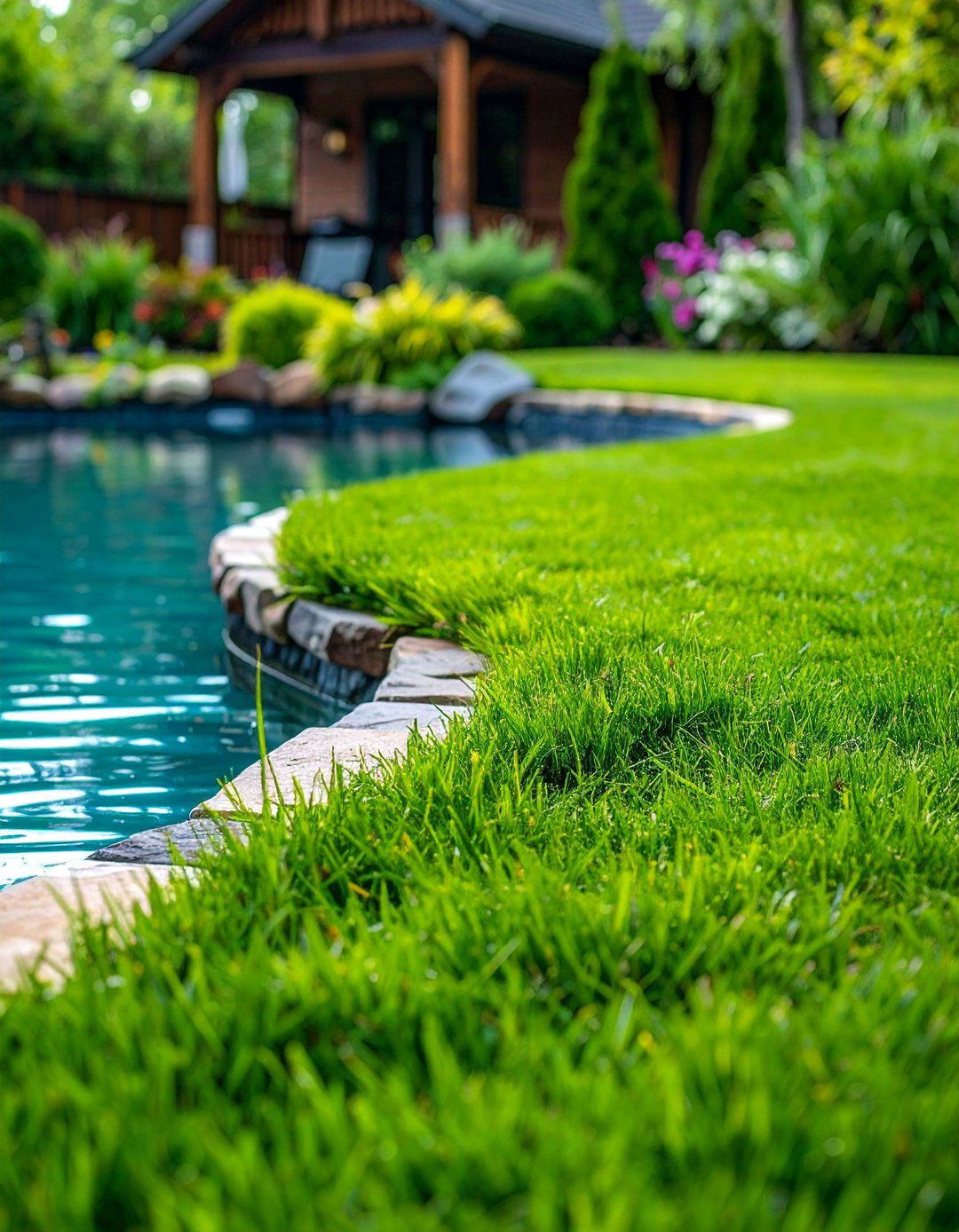



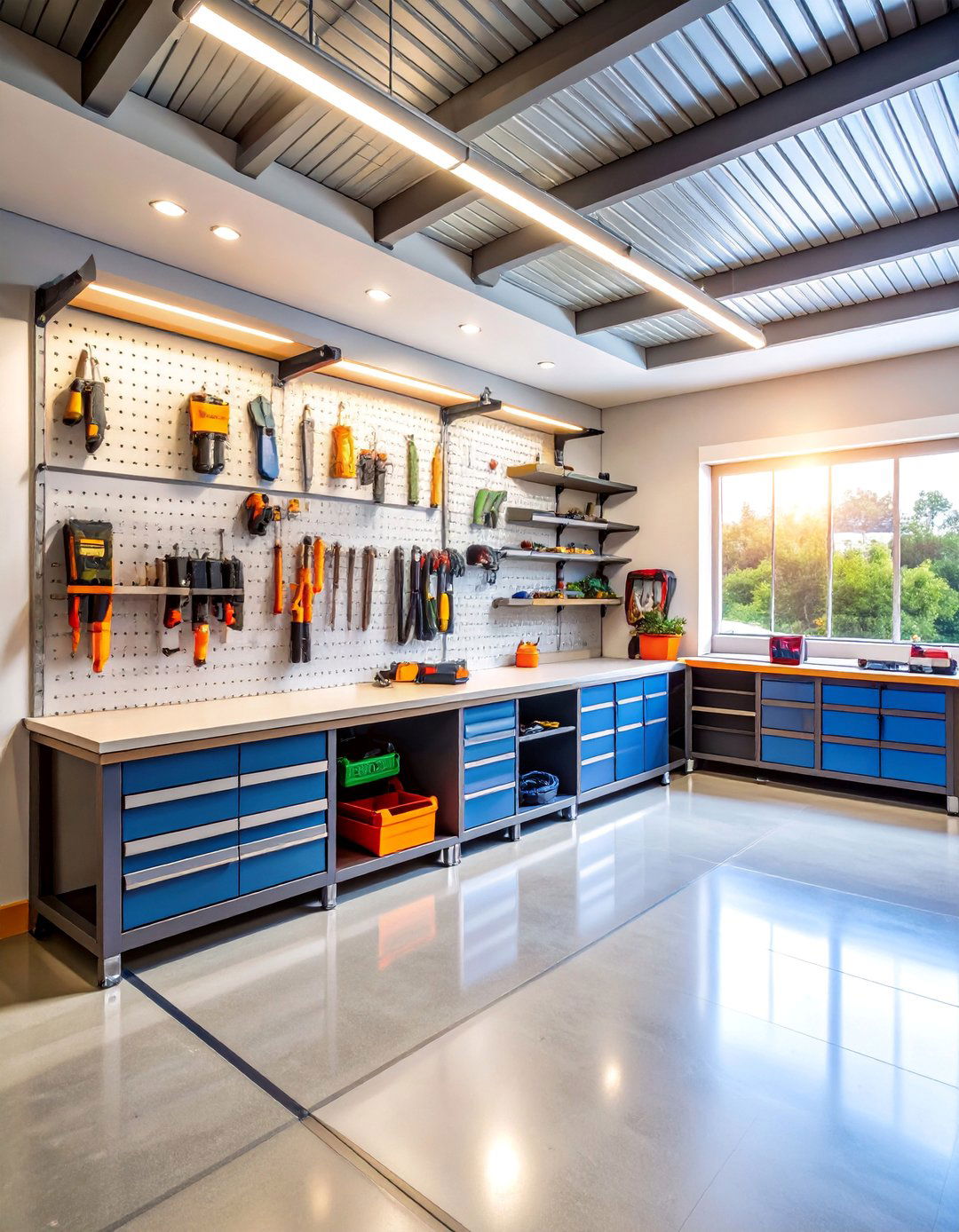
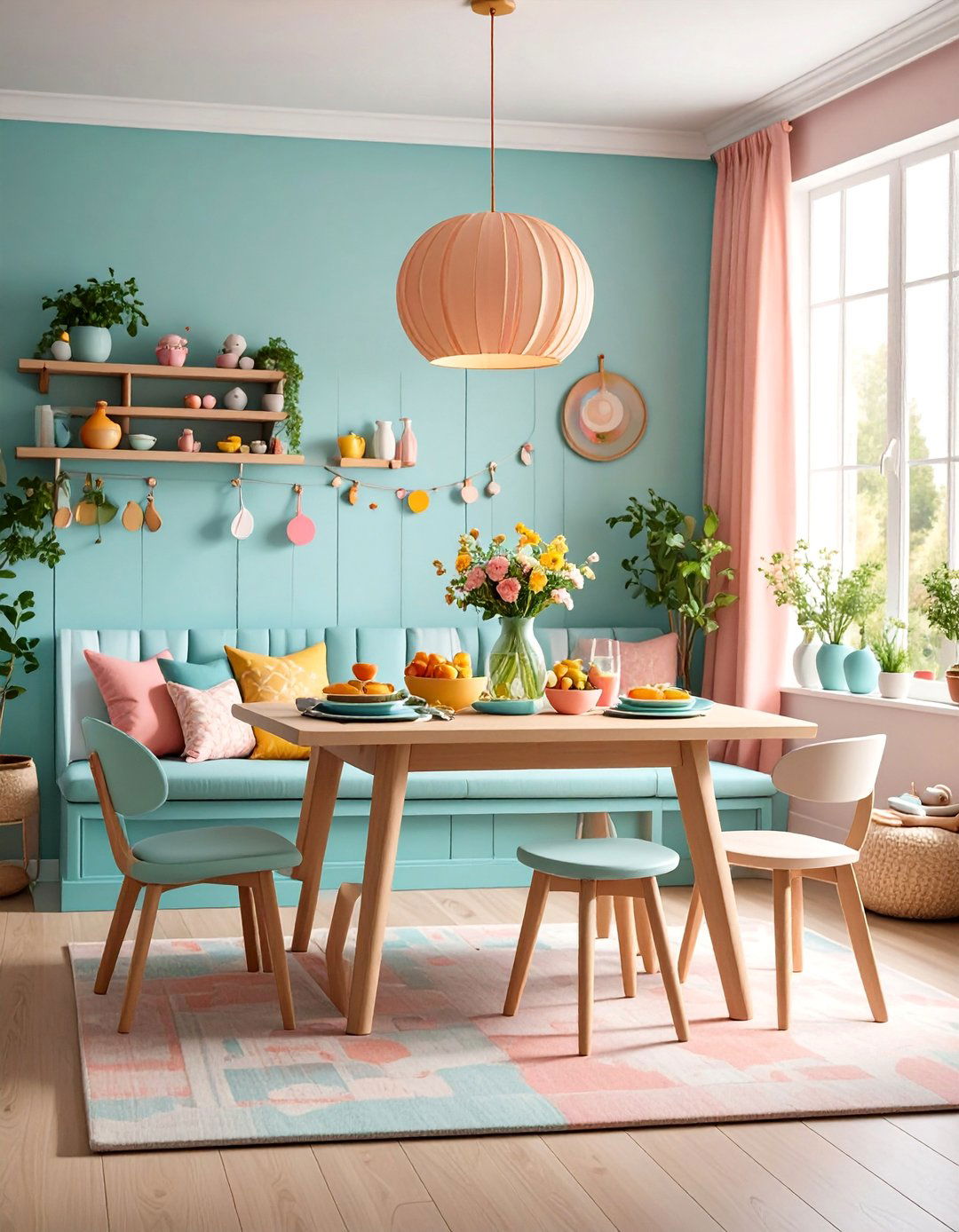
Leave a Reply